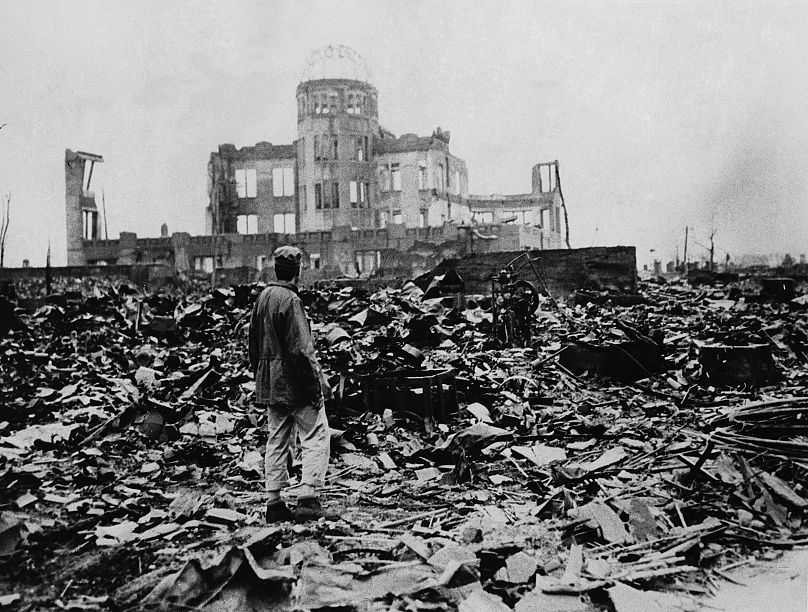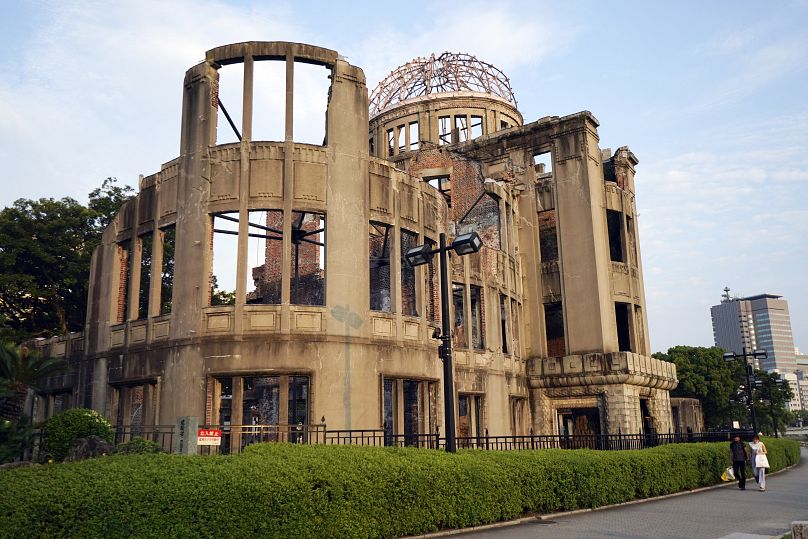Here is how events unfolded and the pleas of the ageing survivors for a nuclear bomb ban.
The United States launched the first atomic bomb 75 years ago on Thursday in a devastating attack on the city of Hiroshima.
Thousands of people were killed underneath a deadly mushroom cloud.
Three days later on August 9, a second atomic bomb was dropped on Nagasaki, killing thousands more and pushing Japan to surrender during World War Two. It was the last nuclear bomb used in armed conflict.
Here is how events unfolded and the pleas of the ageing survivors for a ban on nuclear bombs.
August 6, 1945
The world's first nuclear bomb used against civilians went off at 08:15 local time in the southwestern city of Hiroshima.
The bomb nicknamed "Little Boy" immediately killed 80,000 people, according to initial estimates. This represented around 30 per cent of the population at that time.
By the end of the 1945, it was estimated that 140,000 people died. Thousands more died in the following years due to radiation-related injuries.
The US B-29 "Enola Gay" was the warplane that dropped the bomb, which is estimated to have destroyed 70 per cent of the city.
The bomb was built with uranium-235, the only fissile natural isotope of uranium. The explosion was the equivalent of 16 kilotons of TNT.
August 9, 1945
At 11:02 am local time, the US dropped another bomb called "Fat Man" over Nagasaki.
The detonation was equivalent to 21 kilotons of TNT. More than 40 per cent of the city was destroyed, with 40,000 people immediately killed. That number rose to over 74,000 victims in the following months.
August 15, 1945
Six days after the attack, Japan announced its intention to surrender.
The Japanese foreign affairs minister, Mamoru Shigemitsu, signed the official document on September 2, ending World War Two.
The Empire of Japan had entered the war in 1940 by signing the Tripartite Pact with Italy and Germany. The US entered the conflict in 1941, following the Japanese attack on Pearl Harbor.
Hoping to maintain its influence across Asia, Japan launched attacks on the US-held Philippines, Guam and Wake Island and on the British Empire in Borneo, Malaya, Singapore and Hong Kong.
Calls for a nuclear ban
The last generation of Hiroshima and Nagasaki survivors have called for the abolition of nuclear bombs.
Called the "hibakusha", meaning "person affected by the bomb," they hope their message will outlive them.
But there are fewer of them today. The average age of someone who lived through the event is over 83, according to Japan's health ministry.
There are an estimated 136,700 survivors left, many of whom were infants or unborn children at the time of the attacks.
"What we hibakusha are saying is we can't repeat (a nuclear attack)," 88-year-old Terumi Tanaka, who survived the Nagasaki bombing, told AFP ahead of the anniversaries.
He was 13 when the bomb hit.
"We set up a group called No More Hibakusha Project, which works on preserving records as archives, including what we've written... so that (the next generation) can use them in their campaigns."
Jiro Hamasumi, 74, is among the youngest survivors of the attacks. His mother was pregnant with him in Hiroshima when the bomb struck so he escaped the physical effects of radiation by being in the womb.
The attack killed his father and claimed several other relatives in the aftermath.
"To me, the nuclear umbrella only means the mushroom cloud," Hamasumi said.
"Hibakusha wants the United States to apologise to us, but the proof of the apology is nuclear abolition, we're not after vengeance."













